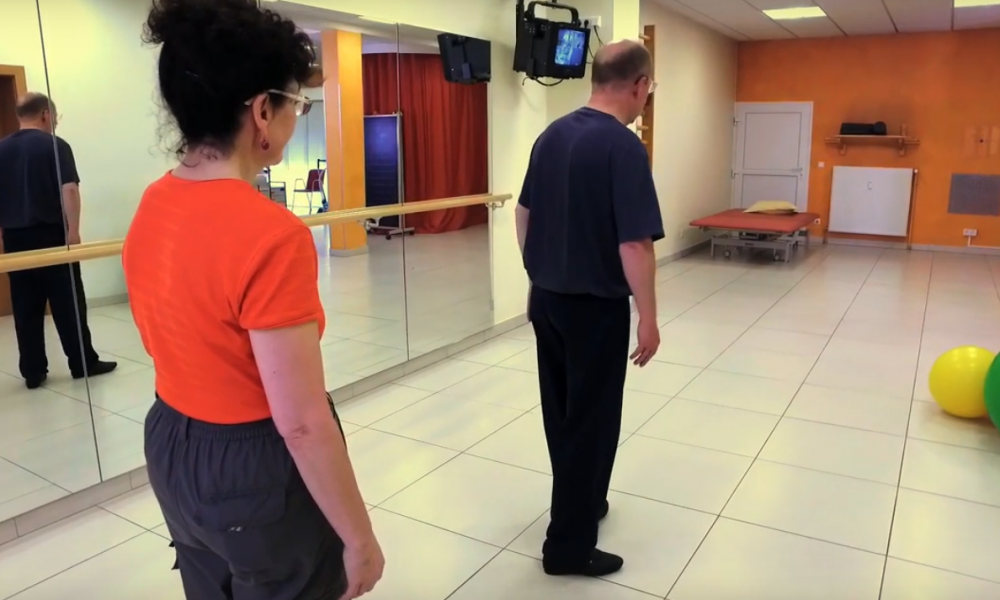The gait of people with Parkinson’s disease can be affected by changes in posture, slowness of movement and a shortened stride.
Over time, certain features of the gait can worsen, with movements being more and more restricted. When you are less active, the muscles strength is reduced. This can lead to musculoskeletal changes and ultimately to poor posture and a stooped stance, thus increasing the risk of falls.
In addition to medication, there are other ways you can help yourself in managing your gait. A physiotherapist will advise on strategies and exercises to improve gait, balance and posture. He/she observes the way the person walks and together can find the most suitable cueing techniques. Such techniques can help reduce freezing and the risk of falls. One example of cueing is listening to your favourite music and walking to the rhythm. However, keep in mind that each person with Parkinson’s disease is different, so it is best to select with your physiotherapist the auditory cue(s) that suit(s) you best indoors and outdoors.
Mariella Graziano has been a physiotherapist for Parkinson’s disease for 30 years. In the video below, she is illustrating cueing examples for people with Parkinson’s disease, together with Koen with whom she works regularly!
- Check out how you can improve your motor symptoms through dancing and stretching!
- Check out the other videos in the “Physiotherapy and Parkinson’s disease” series
- Find a specialised physiotherapist in your area!





